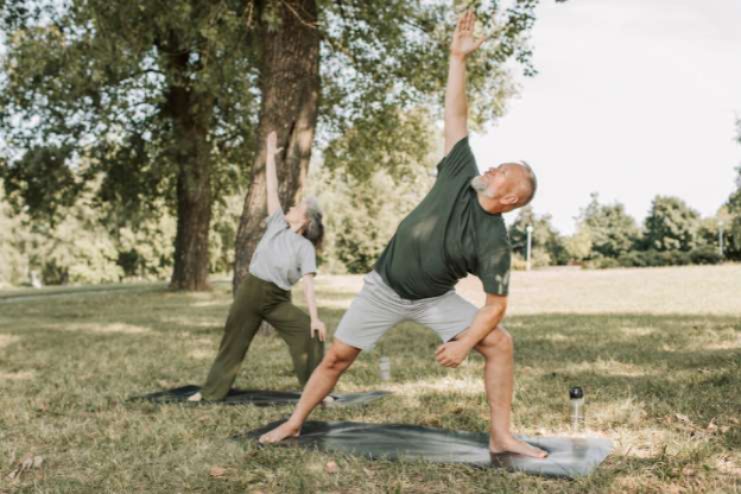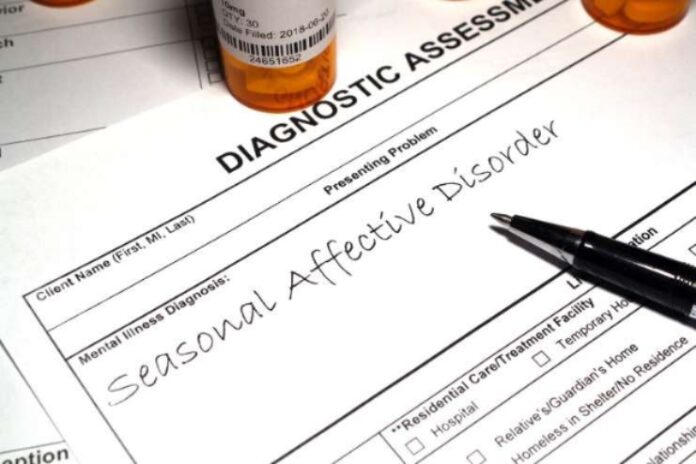Affiliate Disclaimer
Some links in this article are affiliate links. We may earn a small commission if you make a purchase through these links, at no extra cost to you. We only recommend products we find useful to our readersSeasonal affective disorder (SAD) is a form of depression that frequently manifests itself during the decreased daylight hours of the fall and winter seasons. The hallmark of this mood illness is recurrent bouts of significant depression, which often show up as poor energy, irritability, difficulties concentrating, irregular sleep habits, and an ongoing sense of despair.
Studies show that SAD is strongly associated with decreased sun exposure and is not exclusively brought on by cold weather. Variations in serotonin and melatonin levels and circadian rhythm disturbances that some people experience as the days get shorter can facilitate the emergence of depression symptoms.
This article aims to shed light on practical coping mechanisms for controlling and mitigating seasonal affective disorder symptoms by being aware of the characteristics of SAD and putting specific tactics into practice.
Read More: 5 Best Sun Lamps for Seasonal Affective Disorder (SAD) Relief
Overview of Seasonal Affective Disorder
Depression that has a seasonal rhythm is known as seasonal affective disorder (SAD), and it typically manifests itself in the fall and winter. Changes in sunlight exposure are thought to be the leading cause of SAD since they can throw off the body’s natural schedule and have an impact on essential neurotransmitters like melatonin and serotonin.
Your symptoms, which deplete your energy and make you feel moody, begin in the fall and last throughout the winter if you’re like the majority of people with SAD. The spring and summer are when these symptoms usually go away. Less frequently, depression brought on by SAD sets in in the spring or early summer and goes away in the fall or winter.
The reason for SAD is unclear. Seasonal affective disorder (SAD) may have some genetic component, as reduced sunlight and shorter days are believed to be linked to a chemical shift in the brain. Another hormone connected to sleep, melatonin, may be related to SAD.
Research indicates that both types of SAD may be linked to changes in melatonin levels, which are crucial for preserving the regular sleep-wake cycle. Overproduction of melatonin in individuals with winter-pattern SAD can exacerbate drowsiness and result in oversleeping.
On the other hand, individuals with summer-pattern SAD might have lower melatonin levels, which is consistent with long, hot days impairing sleep quality and resulting in symptoms of depression. Increased temperatures, shorter nights, and longer daylight hours can all interfere with sleep.
It usually starts in late fall and is brought on by seasonal changes. Sad moods, low energy, disinterest in routine activities, oversleeping, and weight gain are some of the symptoms. Antidepressants, talk therapy, and light therapy are among the treatment options.
It is essential to recognize the impact that SAD has on mental health. The disorder’s cyclical nature may severely disrupt daily functioning and interpersonal interactions. People must quickly identify the symptoms of SAD and seek out the proper assistance and treatment. Untreated SAD can worsen pre-existing mental health conditions and lower the quality of life.
Effective Coping Strategies for SAD

For Seasonal Affective Disorder (SAD), light therapy, commonly referred to as phototherapy, has shown to be a very successful and non-invasive treatment. Bright artificial light exposure, which usually simulates natural sunlight, can elevate mood and help control circadian rhythms. While there is conflicting data about light therapy’s general efficacy, some studies have shown it beneficial, mainly when utilized first thing in the morning.
For short-term effects, light treatment is regarded to work best. It implies that while it might assist when symptoms arise, you might still experience symptoms of SAD the following winter. Most patients who underwent relief from their symptoms with light treatment did so in about a week.
One of the first-line therapies for fall onset is light therapy. It typically has relatively little adverse effects and begins to act in a few days to weeks. Although there is little research on fair treatment, most patients find it helpful in reducing their symptoms.
Lightboxes are made to provide a therapeutic level of bright light to alleviate SAD symptoms. Light boxes come in a variety of styles. Although all light boxes for treating SAD are made to achieve the same thing, one works better.
One of the first-line therapies for fall onset is light therapy. It typically has relatively little adverse effects and begins to act in a few days to weeks. Although there is little research on fair treatment, most patients find it helpful in reducing their symptoms.
An artificial light box simulates natural light. This kind of light is supposed to trigger a chemical shift in the brain that improves mood and lessens other symptoms of seasonal affective disorder (SAD), like excessive sleep and constant fatigue.
Finding a lightbox that emits at least 10,000 lux of illumination is essential. Users should place the lightbox 16 to 24 inches away from the face, at eye level, to get the most out of light therapy. By keeping this spacing, you can ensure the eyes get the correct quantity of light. People with SAD should integrate light treatment into their daily routine, ideally in the early morning, as consistency is crucial.
Pharmacological treatment, psychotherapy, and light therapy are possible treatments for seasonal affective disorder. Inform your medical practitioner and mental health specialist if you have bipolar disorder; this information is crucial to have when recommending antidepressants or light therapy. Either treatment may bring on an episode of manic episodes.
Read More: 10 Mood-Boosting Foods to Combat Seasonal Affective Disorder During the Winter
Outdoor Exposure and Exercise

In the gloom of Seasonal Affective Disorder (SAD), the healing potential of exercise and the outdoors shines brightly. Getting outside, especially during the day, is a straightforward yet effective way to reduce the symptoms of SAD. Exposure to sunshine naturally elevates mood by encouraging the synthesis of serotonin, the neurotransmitter linked to positive emotions.
Spending time in nature can reduce tension, rage, and anxiety. Exercise is also beneficial for this, but it’s best done outside.
Regularly using green areas has reduced depression risk and enhanced focus and attention span. Being outside enables us to interact socially with loved ones, friends, and even strangers who may be searching for a fantastic hiking trail, for example. Sleeping outside regularly improves your quality of sleep. Regular exposure to daylight aids in the regulation of sleep and waking cycles.
Spending time outside in the sunlight each day can enhance your capacity to sleep at night.
Being outside can enhance general health and well-being. There are lots of options for physical activity in the outdoors. Spending time outside may also help with stress relief and mental wellness. By wearing sun protection, people can reduce their chance of developing skin cancer from excessive UV exposure while still enjoying the benefits of being outside.
Even twenty to thirty minutes spent outside daily can have a significant impact. Sunshine has a profoundly positive effect on mood management, whether you’re enjoying a stroll in the park or engaging in more strenuous outdoor activities.
When combined with time spent outside, frequent exercise is a powerful weapon against winter blues. Engaging in physical activity has been repeatedly connected with a decrease in depression symptoms, particularly those related to SAD. Exercise promotes the release of the body’s natural mood enhancers, endorphins, improving mental health.
Engaging in physical activity appears to lower the likelihood of mental illness. It seems to help treat mental health conditions like sadness and anxiety. For instance, evidence indicates that exercise may be just as helpful for mild-to-moderate depression as pharmaceuticals or psychiatric therapies like cognitive behavioral therapy. Exercise can be a beneficial supplement to other forms of treatment.
Regular physical activity, whether jogging, walking briskly, or playing a favorite sport, can effectively combat the seasonal decline in mood. By embracing the synergy between outside exposure and exercise, those suffering from SAD can benefit from the transforming power of nature and movement and become more resilient to the seasonal fluctuations in their mental health.
Nutritional Support

As we investigate integrative methods for treating Seasonal Affective Disorder (SAD), the role of diet in mood regulation comes into focus. Making sure food decisions can be crucial in reducing symptoms of SAD and fostering mental health.
Maintaining a diet full of nutrient-dense foods will help you focus better and experience less mood swings. Even eating a clean diet rich in whole, unprocessed foods has been demonstrated to help lessen depressive and anxious sensations. On the other hand, poor diets have been connected to a higher risk of stroke or dementia.
A diet rich in vitamins, minerals, and antioxidants will hydrate and shield the brain from damage. Diets heavy in processed foods or refined sugars may harm brain health. Consuming a diet high in fruits and vegetables and foods high in omega-3 fatty acids can improve mental health.
Known as “sunshine vitamin,” vitamin D is essential for good health in general, and depression symptoms have been related to vitamin D deficiency. Vitamin D-rich foods, such as eggs, dairy products, and fatty fish, can be included in your diet during the darker months when you may not get as much natural sunlight. Consider taking vitamin D supplements.
Consume the proper ratio of fats. Healthy fats are necessary for your brain to function correctly. They can be found in avocados, almonds, seeds, oily seafood, olive and rapeseed oils, milk, and eggs. Steer clear of trans fats frequently present in packaged or processed meals, which can harm your heart and mood.
Other mood-enhancing nutrients include antioxidants from fruits and vegetables that support overall brain health and complex carbohydrates found in whole grains, which encourage the creation of serotonin. These nutrients are in addition to omega-3 fatty acids and vitamin D.
Small dietary changes can positively impact energy and mood, such as eating more nutrient-dense meals and consuming less processed sweets and refined carbohydrates. People who see diet as the cornerstone of managing SAD might strengthen their resilience against seasonal changes in mental health by combining it with other coping mechanisms.
Read More: How Seasonal Changes Impact Your Mood and Energy
Mindfulness and Stress Management

Using mindfulness-based techniques becomes apparent as a potent way to manage Seasonal Affective Disorder (SAD) in the fight against the winter blues. Activities that help people cope with stress and improve their mental health include yoga, deep breathing techniques, and meditation.
Because mindfulness incorporates several therapeutic modalities, including yoga, deep breathing exercises, attentional concentration, and acceptance without judgment, it is regarded as a comprehensive therapy that can reduce stress and enhance psychological well-being. One of the central tenets of meditation is mindfulness, which consists of two essential components: maintaining attention to the present moment and exhibiting acceptance of the experience.
Mindfulness treatment is flexible and effective because there are no contraindications. It may be used with people of all ages, from young toddlers to older people. Furthermore, mindfulness therapy is straightforward and can be conducted anytime and wherever the patient chooses.
Focused attention on the present moment, which is the hallmark of mindfulness meditation, has demonstrated the potential to ease symptoms of depression, particularly those unique to SAD. People can have more control over their thoughts and feelings by practicing mindfulness without passing judgment, which builds resilience in the face of seasonal difficulties.
According to some, the goal of mindfulness treatment is to help people feel less stressed, depressed, and anxious overall. It implies that people of different religions, beliefs, and ethnic and cultural backgrounds can get mindfulness therapy.
Yoga is the holistic approach to physical and mental well-being because it combines physical postures, breath control, and meditation. Regular practice is a valuable addition to the toolkit for treating SAD since it has been linked to decreased symptoms of anxiety and depression.
This section highlights the value of relaxation techniques and encourages people to experiment with and embrace customized mindfulness-based activities. Implementing these tactics into daily routines can help people with seasonal affective disorder (SAD) develop a resilient mentality and a sense of tranquility, enabling them to manage the challenges of the seasonal shift more easily.
Seeking Professional Support

Managing Seasonal Affective Disorder (SAD) requires more than self-help techniques, highlighting the vital role that professional assistance plays in the treatment of this illness. Individuals can receive specialized interventions that address the unique complexities of SAD through therapy, counseling, and psychiatric support, providing a complete and individualized approach to mental health.
Other medical problems can also be caused by poor mental health. Obesity, digestive issues, poor sleep quality and difficulties, and other diseases are all related. Early intervention reduces the chance of acquiring additional health issues. It could be time to get professional help if stress paralyzes you, you lose control over your emotions, depression affects your capacity to function, or you observe these or related symptoms in a loved one.
Determining whether you need care may be easier if you know the warning signals of a more severe illness. Your primary care physician probably knows many mental health professionals in the area, so asking for their recommendation is a beautiful place to start when looking for a top mental health provider.
Seeking early assistance might be beneficial when dealing with mental health concerns. When you exhibit uncontrollable feelings, ideas, or behaviors, this is particularly problematic when it interferes with relationships, productivity, or general well-being. Never be ashamed to seek assistance when you’re feeling down or unhappy.
In particular, cognitive-behavioral therapy (CBT) has shown promise in treating SAD by assisting patients in recognizing and altering harmful thought processes and behavioral patterns. In counseling sessions, which offer a supportive environment, individuals can investigate the underlying causes of their seasonal difficulties and create coping strategies beyond the immediate symptoms.
Antidepressant prescriptions may be part of the psychiatric support package for specific individuals. These drugs can lessen the depressive symptoms connected to SAD by regulating neurotransmitters in the brain. If necessary, a healthcare professional can assess the patient’s unique needs and choose the best course of action for medicine.
It is crucial to seek professional assistance because medical professionals can direct patients toward treatments supported by evidence, monitor their progress, and modify treatment plans as necessary. It is encouraging to know that many therapeutic therapies for SAD can be easily combined with other coping mechanisms to provide a thorough and all-encompassing approach to mental health.
Read More: 14 Ways to Cope with Seasonal Depression for Sustained Mental Health
Conclusion
Treating Seasonal Affective Disorder (SAD) requires a complex strategy. A complete toolset for managing symptoms of seasonal affective disorder (SAD) includes incorporating light therapy, exercise, exposure to the outdoors, dietary support, mindfulness, and seeking professional assistance.
By implementing these tactics, people can empower themselves to deal with seasonal obstacles with resilience and better mental health. It proactively promotes mental health by encouraging readers to experiment and integrate these techniques into their daily lives, highlighting that self-care is the first step toward a better season.
References
- https://www.mayoclinic.org/diseases-conditions/seasonal-affective-disorder/symptoms-causes/syc-20364651
- https://my.clevelandclinic.org/health/diseases/9293-seasonal-depression
- https://www.hopkinsmedicine.org/health/conditions-and-diseases/seasonal-affective-disorder
- https://www.nimh.nih.gov/health/publications/seasonal-affective-disorder
- https://www.nhs.uk/mental-health/conditions/seasonal-affective-disorder-sad/treatment/
- https://www.mayoclinic.org/diseases-conditions/seasonal-affective-disorder/in-depth/seasonal-affective-disorder-treatment/art-20048298
- https://www.cdc.gov/cancer/skin/basic_info/outdoors.htm
- https://www.mind.org.uk/information-support/tips-for-everyday-living/nature-and-mental-health/how-nature-benefits-mental-health/
- https://www.betterhealth.vic.gov.au/health/healthyliving/exercise-and-mental-health
- https://www.who.int/news-room/fact-sheets/detail/mental-health-strengthening-our-response/
- https://www.waldenu.edu/online-bachelors-programs/bs-in-psychology/resource/five-mental-benefits-of-exercise
- https://www.ccmhhealth.com/nutrition-and-mental-health/
- https://www.rupahealth.com/post/the-role-of-nutrition-in-managing-depression-foods-that-boost-mood
- https://www.aetna.com/health-guide/food-affects-mental-health.html
- https://www.mentalhealth.org.uk/explore-mental-health/a-z-topics/diet-and-mental-health
- https://www.ncbi.nlm.nih.gov/pmc/articles/PMC9819153/
- https://www.urmc.rochester.edu/mental-health-wellness/seek-help.aspx
- https://www.forbes.com/health/mind/professional-mental-help/
In this Article



















